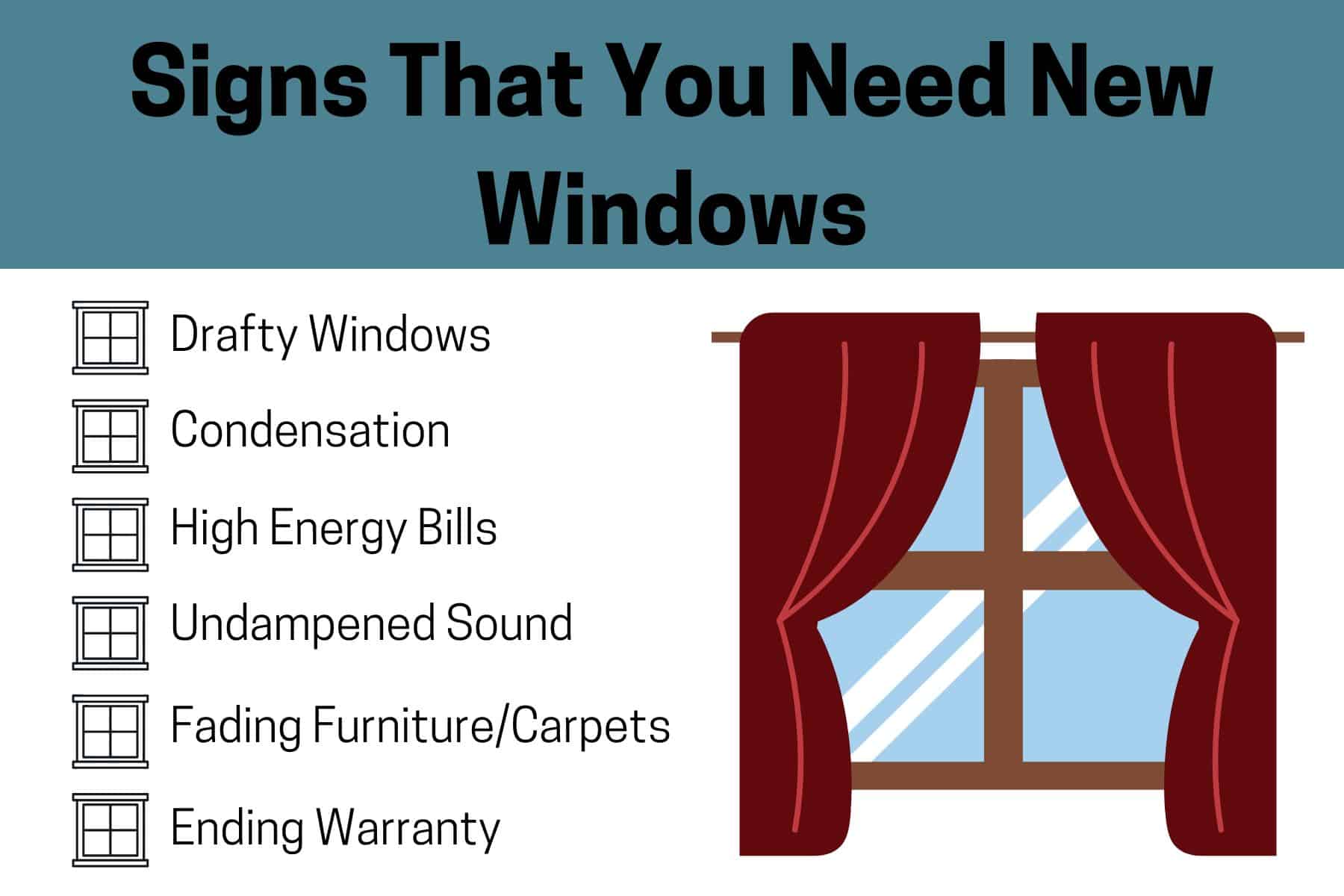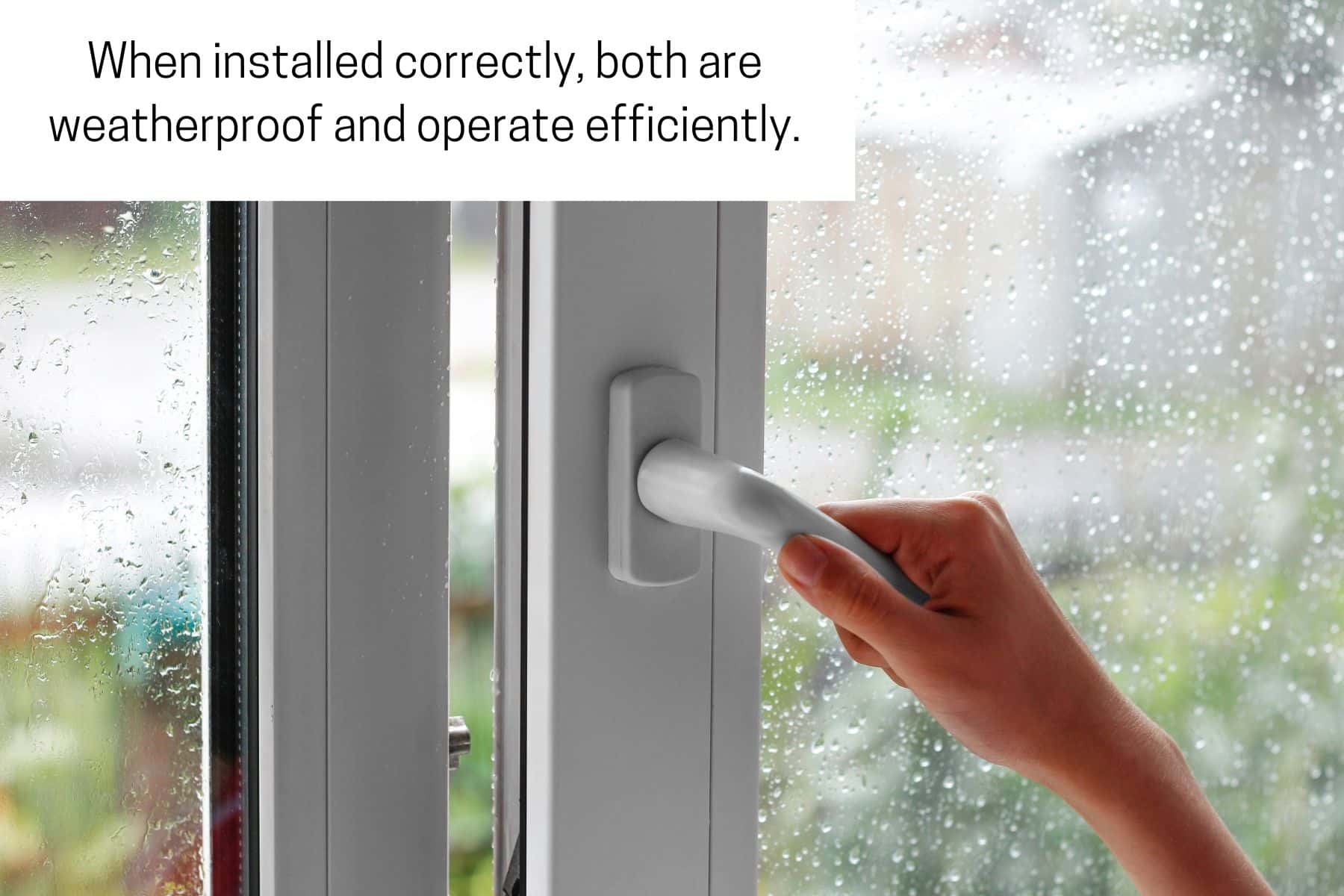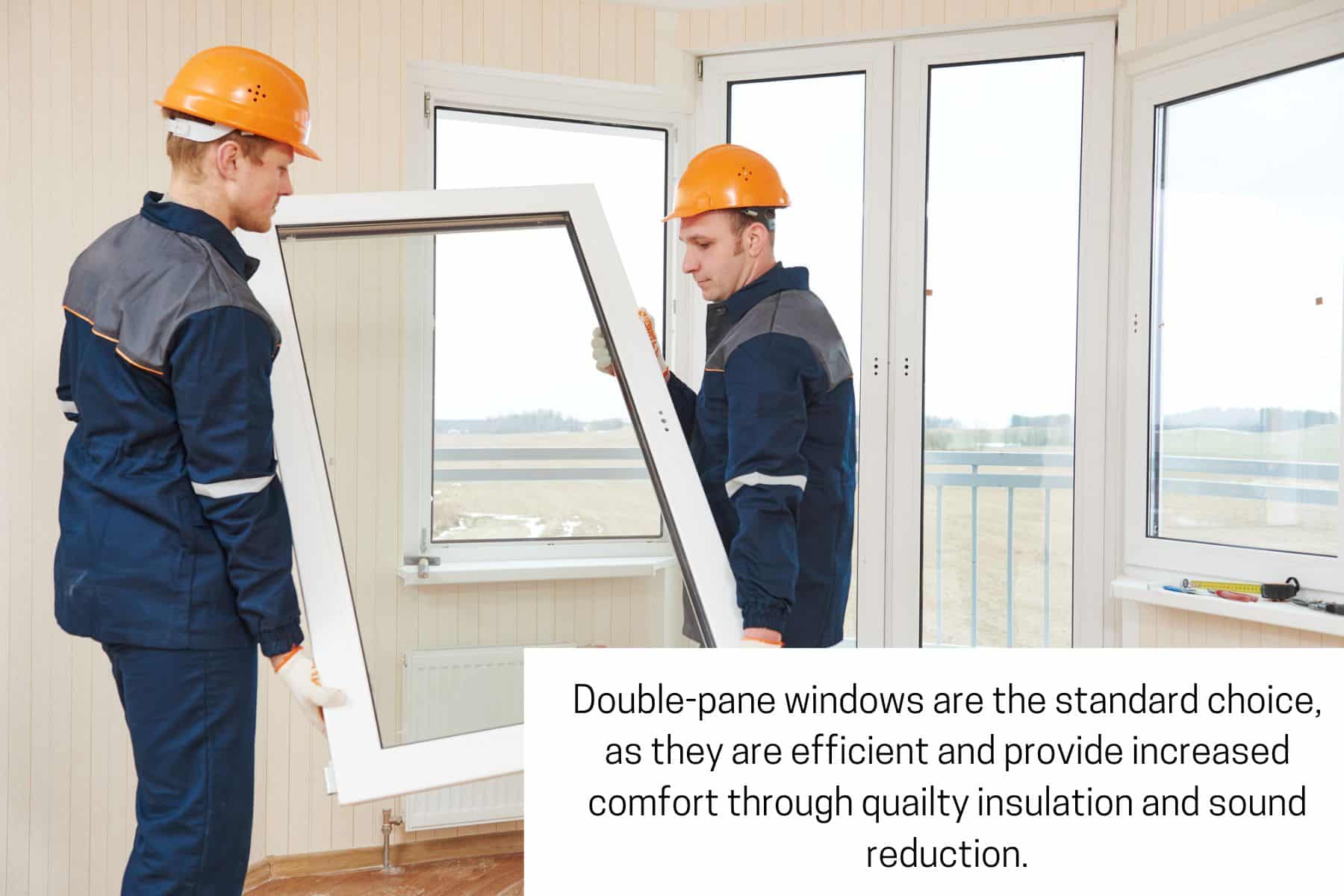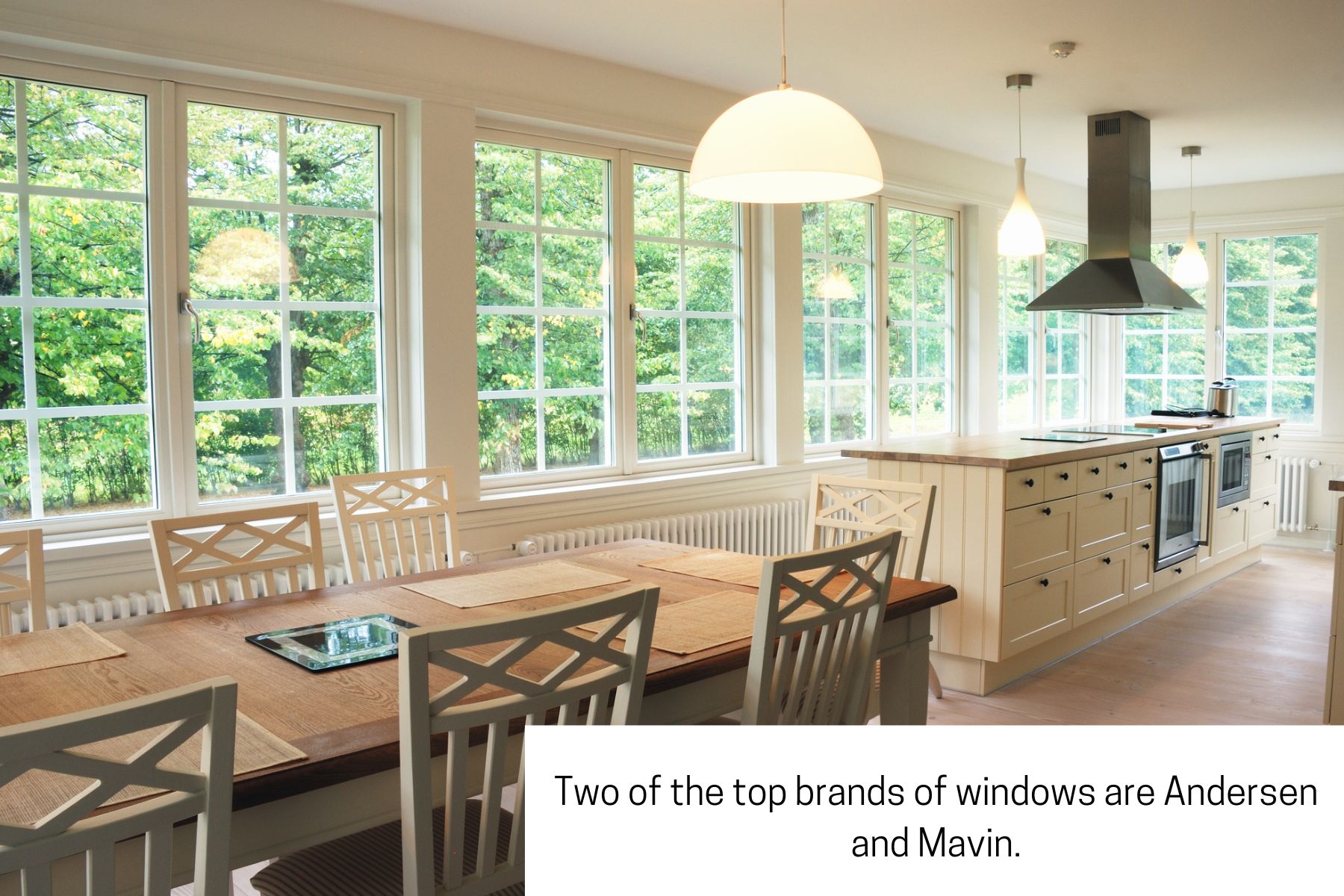A Homeowner’s Guide to New Windows
It's a windy spring day. You’re sitting next to the window and as a gust of wind hammers that side of the house, you feel a slight, uncomfortable breeze on your neck.
If this describes your situation, then your home definitely needs new windows. But the truth is that you actually needed new windows long before the wind started getting through.
Most people know that quality windows are vital to an efficient home and save you money in the long run. But how do you know when it's time to install new windows? What should you look for in new windows? Which brands are the best investment?
We’ll cover this and more in this homeowner’s guide to new windows!
Let’s begin.
When is it Time to Install New Windows?
If you don’t need new windows, this article may not be for you – so, let’s start by addressing a few indicators that your home may need upgraded windows.
1 - Failing frames/drafty windows
Possibly the most obvious sign is the one we used in the introduction: drafty windows. This is usually due to failing frames or seals. If your windows are poorly sealed, it doesn’t just mean the outside air is getting in. The air inside your home is also seeping out, and your heating or cooling system needs to work overtime to compensate. This creates an unnecessary increase in energy costs.
2 - Condensation
There are two places where you shouldn’t see condensation: on the inside of your windows and between the window panes of double or triple-pane windows.
If there is condensation on the inside of your windows, that means they are leaking air, and/or the humidity levels in your home are high. If you spot condensation between panes, the seals are beginning to fail or have failed entirely. When condensation is in either of these areas, you know it's time for new windows.
However, there's no need to worry if the condensation is on the outside of your windows. Your windows are doing their job; it's just warmer and more humid outside than inside your home.
3 - Unexplained high energy bills
Your windows may be inefficient without the signs as obvious as drafty windows or condensation. If your energy bills are high for seemingly no reason, it might be your windows.
Bonus tip: Here’s a little test that helps you determine if your windows are contributing to those high energy bills. Stand next to your windows on a cold day. Is it noticeably cooler than other parts of your home? If yes, the windows are allowing enough cold air through to cool down the warm air from your heating system as it nears the window.
4 - Fail to dampen sound
If your windows fail to dampen the sound coming from outside, it's probably time to consider replacing them. This usually indicates that seals are beginning to weaken or fail, or more commonly, is due to older, single-pane windows.
5 - Difficult to open or close
If your windows are difficult to open or close, it doesn’t necessarily mean you need to replace the windows. But if you’ve tried cleaning and fixing them and the problems aren’t resolved, then replacing the window is the next step.
6 - Fading furniture and carpets
If you’ve noticed that the floors and furniture around your windows are fading, this is a sign that your windows aren’t functioning as well as they could be. Thankfully, efficient windows can prevent fade damage, especially when those windows have an extra layer of protection like low-emissivity or Low-E glass coatings. These coatings provide additional protection against the UV rays that would otherwise damage your belongings.
7 - Ending Warranty
If your windows are nearing the end of their warranty, it’s probably time to consider replacing them. You don’t need to wait until the obvious problems like draftiness arise, or you pay a few hundred dollars in extra utility bills. Stay ahead of the curve by replacing your windows before they have entirely failed.

Pros and Cons of Installing New Windows
In this section, we’ll look at some of the pros and cons of installing new windows in your home. Let’s start with the positives.
Pros
1 - Energy Savings
Since they function more efficiently, installing new windows will save you money on energy bills. It's important to remember that you need to invest in quality windows for this to be the case.
2 - Better Aesthetics
Old, failing windows quickly become an eyesore or, at minimum, make a home look outdated. New windows give a building a facelift, making them look fresh and up-to-date. Besides increasing curb appeal, these better aesthetics also contribute to increased home value overall.
3 - Increased Comfort & Home Value
Replacing worn-out or inefficient windows significantly increases your comfort. You’ll enjoy natural light in your home without increased energy bills, unwelcome breezes, or fading furniture.
Based on 2022 numbers, replacing windows yields an ROI of about 70%. Any energy savings are an addition to this number. If you are considering selling your home in the near future, new windows could be a good investment. Over 80% of home buyers are looking for energy-efficient features like windows in the home they purchase.
Cons
1 - Cost
The most significant drawback to installing new windows is the cost. Let’s face the truth head-on: quality windows are expensive.
Thankfully, they are usually worth the investment.
And remember, cheap windows really don’t save you money because they fail more quickly and need to be replaced sooner. Rather than go with cheap windows, it’s better to save up until you purchase a quality product.
2 - Style Risk
If you choose stylistic windows, you run a bit of a risk if you want to sell your home in the future. You also want to make sure that the style of windows you choose matches your home aesthetic. Failure to do this can actually decrease your home value.
For example, you should never replace windows in a historic home with vinyl insert windows. This compromises the historical integrity of the home and its overall appearance.
3 - You can’t do it yourself
If you want to save some money or are a do-it-yourself type of person, you may want to replace the windows yourself.
Unfortunately, unless you have experience replacing windows, this isn’t a good idea. Installation can be tricky; if it isn’t done right, you’ll need to pay more later to fix or replace the windows.
New Construction vs. Replacement Windows
The next question you’ll face is whether you should install new construction or replacement windows. Let’s take a quick look at each.
New construction windows are designed with nailing or attachment fins on the exterior side of the window. There are three cases where these windows are the best option.
- New construction when there is no trim or siding in place
- When doing deep remodeling
- When repairing badly damaged support structures (e.g., window frame, walls, siding)
Conversely, replacement windows are designed with smooth edges so they can insert into an existing window frame. These windows are used for replacing existing widows when the frames and surrounding area are in good shape.

When installed correctly, both are weatherproof and operate efficiently. It's possible to use new construction windows instead of replacement windows, but they are more expensive and, for most people, don’t offer enough advantages to outweigh the extra cost. But while new construction windows can be used in replacement situations, replacement windows shouldn’t be used in new construction.
Pro tip: Have your contractor check the frames and surrounding wall area of all windows you need replacing to make sure there aren’t hidden issues that would make new construction windows a better option.
6 Features to Look for in Windows
Quality windows are comprised of many features. Here are six features to look for when choosing which widows are suitable for you.
Energy Efficiency
The number one feature you should look for in a window is its energy efficiency. In the past, you may have needed to choose between a stylish window and one that was energy efficient. But with technological advances, you can now find windows that look great and are energy efficient.
To understand how efficient a window is, you need to know how it rates on the following two measures:
- U-factor: the U-factor shows the thermal conductivity of the window, i.e., how much hot air can pass through. Windows usually range from 0.2 to 1.25, with lower numbers indicating better insulation.
- Solar heat gain coefficient (SHGC): the SHGC measures how much solar energy passes through the window. If you live in a cold climate, you may want the sun to help heat your home. In this case, you’ll want a higher SHGC. If you’re from a warmer climate, you’ll want a window with a low SHGC that blocks the heat from the sun’s rays.
Framing Material
Different framing materials have pros and cons, and which is best depends on your situation. Here are the four most common:
- Wood: Classic appearance, requires more upkeep
- Vinyl: Affordable, energy efficient, durable, limited design options
- Aluminum: inexpensive, very durable, poor energy efficiency
- Fiberglass: Durable, excellent insulator, design freedom, expensive
Warranties
Most manufacturers have some form of warranty for their products, and some installers also offer warranties. For example, Choice Exteriors provides a 6-year workmanship warranty.
However, manufacturers’ warranties vary significantly in length and what they cover. For example, a warranty may include the word “lifetime” but only cover for a few years after installation. Others do extend for 15-20+ years. While a significant majority cover the glass, fewer warranties cover installation issues, and even fewer cover hardware. Some warranties don’t transfer to the new owner if the house is sold. All of these variables make it very important to read the warranties closely and make sure you are comfortable agreeing to what is being offered.
Glazing
Glazing refers to the action or process of fitting glass into windows. When you replace your windows, you’ll need to decide how many panes of glass you want in each window. Single-pane windows are still available but aren’t popular since they break more quickly and aren’t as energy efficient.

Double-pane windows are the standard choice, as they are efficient and provide increased comfort through quailty insulation and sound reduction. If you live in a loud area or are concerned about maintaining your home's temperature, triple-pane windows are also an option. These do come at an increased investment, so unless your situation calls for that extra pane, these windows aren’t necessary.
Safety
It can be easy to forget about the safety component of windows. Let’s look at this briefly from two angles.
First, if you have small children or pets, you want to ensure that they cannot open or fall out of any windows. Choosing a double-hung window that opens only from the top or a window that doesn’t open is a good way to avoid this.
Second, consider the quality of the locking mechanism of windows on the lower floors to mitigate break-ins. Quality locking hardware and sturdy glass can be a deterrent for these types of crimes.
Best Brands of Windows
There are many quality window brands on the market today. In this blog, we’ll highlight our two favorites and offer a few honorable mentions.
Andersen Windows
If you google “best window brands,” Andersen Windows will be at the top of most lists you find. The leading brand in windows and doors, Anderson was founded in 1903. They offer an expansive selection of windows with numerous options and customizations available for each window.
But what's a good product without the warranties and customer service to back it up? Andersen has a good reputation for excellent customer service and offers a variety of warranties, including 20-year glass courage and 10-year coverage for non-glass features.
Marvin Windows
Founded in 1912, Marvin Windows has built a reputation for quality, elegant windows. Marvin has eight factories across America and offers some unique, innovative designs. For example, several high-tech Marvin skylights are designed to sync with Amazon Alexa or Google Assistant for easy operation.
They also offer customization options perfect for those looking for a specialized look. If you’re looking for something a little more basic, Marvin offers these as well. If you choose a Marvin window, you can be confident that you’ve chosen well.
Other quality brands include:

Preparing Your Home for New Windows
Once you’ve decided which windows to purchase and have scheduled a time for the installation, it's time to prepare your home for new windows. Follow these six steps to prepare your home for a streamlined window installation process.
Clear the area around the windows
It's important that the installers have a clear area to work. Clear the space around the inside and outside of the windows that will be replaced. This involves activities like trimming bushes, moving furniture to a safe distance (four-six feet), and removing any curtains or blinds. Make sure that anything breakable is moved out of the area.
Cover floors
It's a good practice to cover your floor with a tarp or plastic. This mitigates the risk of damaging your floors and protects them from the dirt created during the project.
Cover any furniture
Cover any furniture in the room with a drop cloth to protect them from the dust this kind of project creates.
Deactivate alarm system
Make sure to deactivate any alarm systems that are connected to your old windows. Keep in mind that you may need someone from your security company to do this and reconnect the system to your new windows.
Plan a workspace for the installers
It's helpful to plan a place for the installers to place their equipment, especially if it's a rainy day. A place like a garage with easy access to outlets is a great option.
Keep children and pets away
Make sure to keep children and pets a safe distance away from the work area. It may be a good time to take them to a friend's or grandparent’s home.
Conclusion
New windows increase the comfort and efficiency of your home while also making it more aesthetically pleasing! We hope this blog was a helpful guide to navigating the process of choosing new windows for your home.
At Choice Exteriors, we specialize in Andersen and Marvin window installations. We are committed to providing exceptional products and services and exceeding expectations. Working with us is simple!
- Schedule an estimate
- After finalizing all the details, sign the contract
- We do the work – from ordering parts to getting permits to clean up
- Love your new windows!
In addition to windows, we offer stucco remediation, siding, roofing, exterior trim, and decks.
If you’re interested in new windows or have additional questions, contact us today.
We’d love to work with you!





